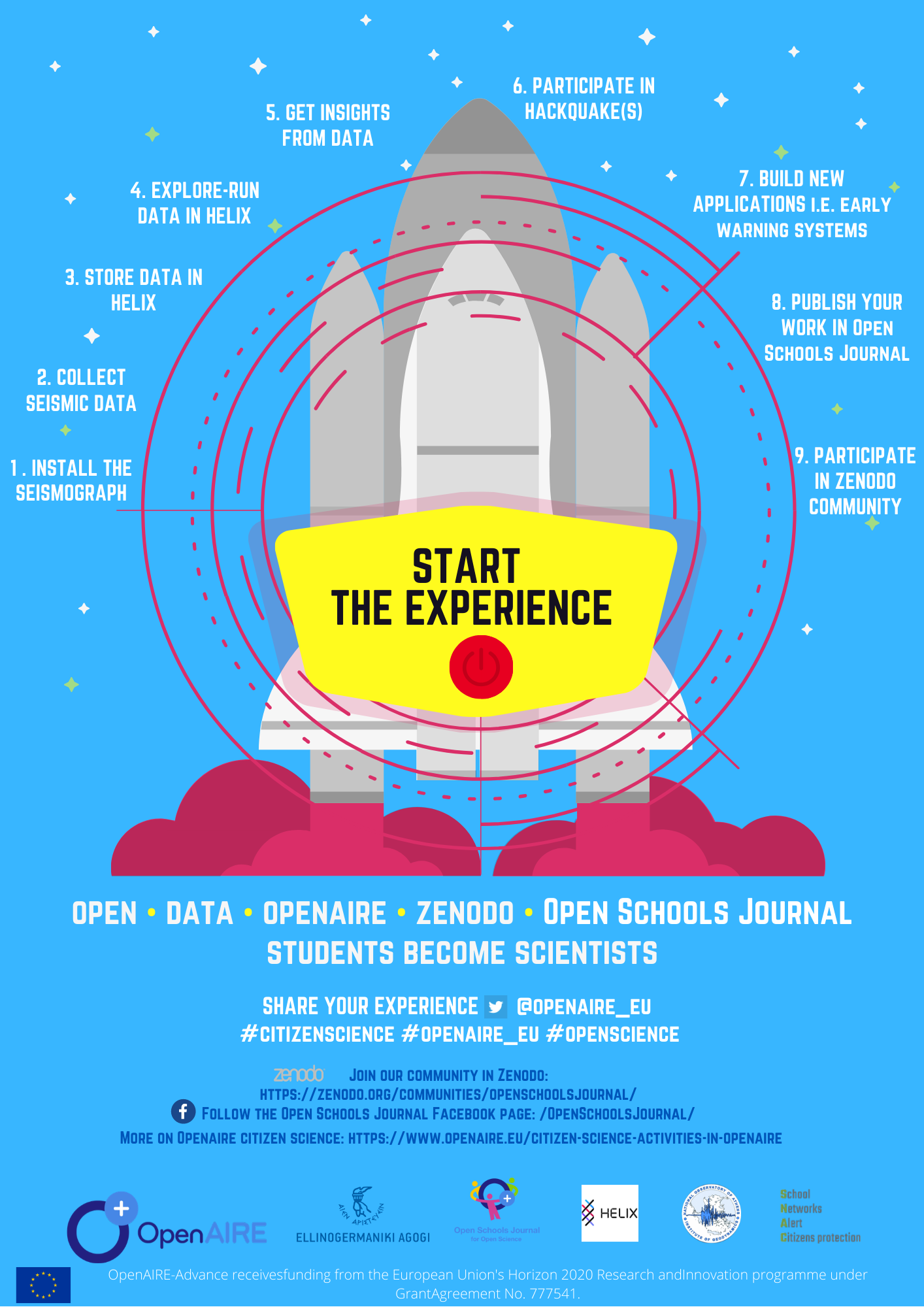Citizen Science and OpenAIRE: our current activities
Open Science for all
The European Commission considers Citizen Science as an essential part of Europe’s digital future: it is a broad term, covering that part of Open Science in which citizens (non-researchers) can participate in the scientific research process in different possible ways: as observers, as funders, in identifying images or analysing data, or providing data themselves. This allows for the democratisation of science, and is also linked to stakeholders' engagement and public participation.
In OpenAIRE Advance, we actively engage citizens, such as teachers and students, in a task focused on practices of learning and conducting science. The aim is to demonstrate how individuals and groups, equipped with simple technological tools, could access a unique pool of scientific documentation (via OpenAIRE) and share information with expert communities online (via repositories such as Zenodo).
What about the data?
There is an extra focus on the protection of the data stored while these citizen science projects are running. New data is developed in some instances, and the results’ validation and data curation for the content produced and managed in the framework of the project.
Overview of the activities
There are three main ongoing activities in the Citizen Science task: the Open Schools Journal for Open Science, the School Seismograph Network, and ‘Bringing Nobel Prize Physics to the Classroom’.
Open Schools Journal for Open Science

The Open Schools Journal for Open Science (OSJ) is the first European journal designed as a regular scientific journal that is both intended for students and is written by students. It accepts original papers written by students from primary and secondary schools across Europe, under the mentoring of their teachers, on all aspects of Science, Engineering and Technology. Students and teachers are welcome to publish the data and results produced by their school project.
The articles follow a full peer-review process and reviewers are scientists and professors. Through this process, students can experiment with the concept of scientific writing and Open Science, scientific data and the value of digital identities. The process also fosters the development of critical thinking skills and the need for using sources and scientific literature to support their opinion.
To date, the journal’s archives include five issues with 105 articles open access articles, that are also available on the dedicated community on Zenodo.
School Seismograph Network

The School Seismograph Network is a network of seismographs (devices which can detect and record earthquakes) installed in 61 high schools in Greece, Cyprus, Italy, Turkey, Bulgaria, Israel and Portugal. The network extends from the Azores (North Atlantic) to Israel covering the extremely earthquake-prone Eastern Mediterranean area. Seismographs have also been placed on islands with volcanic activity such as the Azores, Sicily, Santorini and Nisyros. The students welcomed the seismographs with enthusiasm and have become familiar with seismology and the data provided. Moreover, they acted as multipliers by conveying all this valuable information to their families: students also learned how to protect themselves better if an earthquake happens, and this information gets communicated well beyond the school environment. The network also simulates the scientific methodology in school reality: students understand that the scientific instrument they supervise must always be operational and that the results need to be communicated correctly in order to ensure correct analysis.
Currently, the seismic data database collects more than 20,000 recordings. There are more than 150 schools involved in different initiatives focusing on the analysis of the data: location of the epicentre of the earthquake, development of early warning algorithms, earth tomography, analysis of seismic and volcanic earthquakes, design and construction of homemade seismometers.
Various events have been organised in this framework, such as the Hackquake; in that occasion, the seismic vibrations in the Eastern Mediterranean region were used by the participants through the Hellenic Data Service HELIX. The aim was to develop applications functioning as an early warning system for earthquakes of the “Build your own Seismograph” contest.
The network of schools hosting a seismograph is listed here. There is also a teacher’s community where school activities are described and teachers interact.
You might be interested in the recordings of the webinar on that topic hold at the beginning of May.

Bringing Nobel Prize Physics to the Classroom with Zenodo
A series of educational activities aiming to introduce Nobel Prize Physics to the Classroom is being developed and documented in ZENODO. These activities use data from large scale research infrastructures in the field of Physics (e.g. VIRGO, KM3NeT, CERN) and provide learners with the challenge to analyse these data and to help optimise the operation of these infrastructures hunting for noise sources. Students are asked to locate and report on sources of noise in the data sets so that they can help identify bioluminescence events in the deep ocean environment or earthquake signals). The outputs of these activities are available in the FRONTIERS Community in ZENODO, along with datasets used and online tools available for the needs of these activities. This process has already involved more than 200 teachers in Europe.
Follow our initiatives as more is coming!
